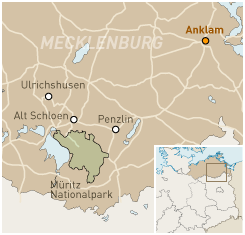A cultural product: The sugar beet
Beyond doubt, the sugar beet is a product both of modernity and industrialisation. As early as 1747, the chemist Andreas
Sigismund Marggraf verified the amount of sugar which an ordinary beet was supposed to contain. In the 19th century, the
establishment of the sugar beet was hoped to provide independence from cane sugar. At that time, refined sugar was shipped
from all over the world. But the producing countries increasingly charged taxes for the sugar they exported and started to
process the cane sugar themselves. Consequently, overseas-sugar became much more expensive. Around 1800, farmers in Silesia
managed to gain almost 68 kilos of sugar out of 2570 kilos of beet - the starting signal for an own sugar production. The
first sugar refineries were created and one of the most modern agricultural industries in Europe was born - right in the
centre of the conflict between imported sugar cane and European beet sugar.
To grow the sugar beet is very lucrative - if the conditions allow it to prosper. Sugar beet puts high demands on the character, fertilisation and treatment of the soil. Besides the sugar as the ultimate product of this process, different by-products have been established; among them are yeast, alcohol, large amounts of syrup and, above all, bioethanol. With regard to the implementation of the new sugar market regulations of the European Union, these by-products especially have become the focal point of sugar refinery production.
To grow the sugar beet is very lucrative - if the conditions allow it to prosper. Sugar beet puts high demands on the character, fertilisation and treatment of the soil. Besides the sugar as the ultimate product of this process, different by-products have been established; among them are yeast, alcohol, large amounts of syrup and, above all, bioethanol. With regard to the implementation of the new sugar market regulations of the European Union, these by-products especially have become the focal point of sugar refinery production.
Anklam
Overview The mechanisation of agriculture A cultural product: The sugar beet The sugar market regulations of the European Union Master of the sugar: Ingo Kuchenbrandt
